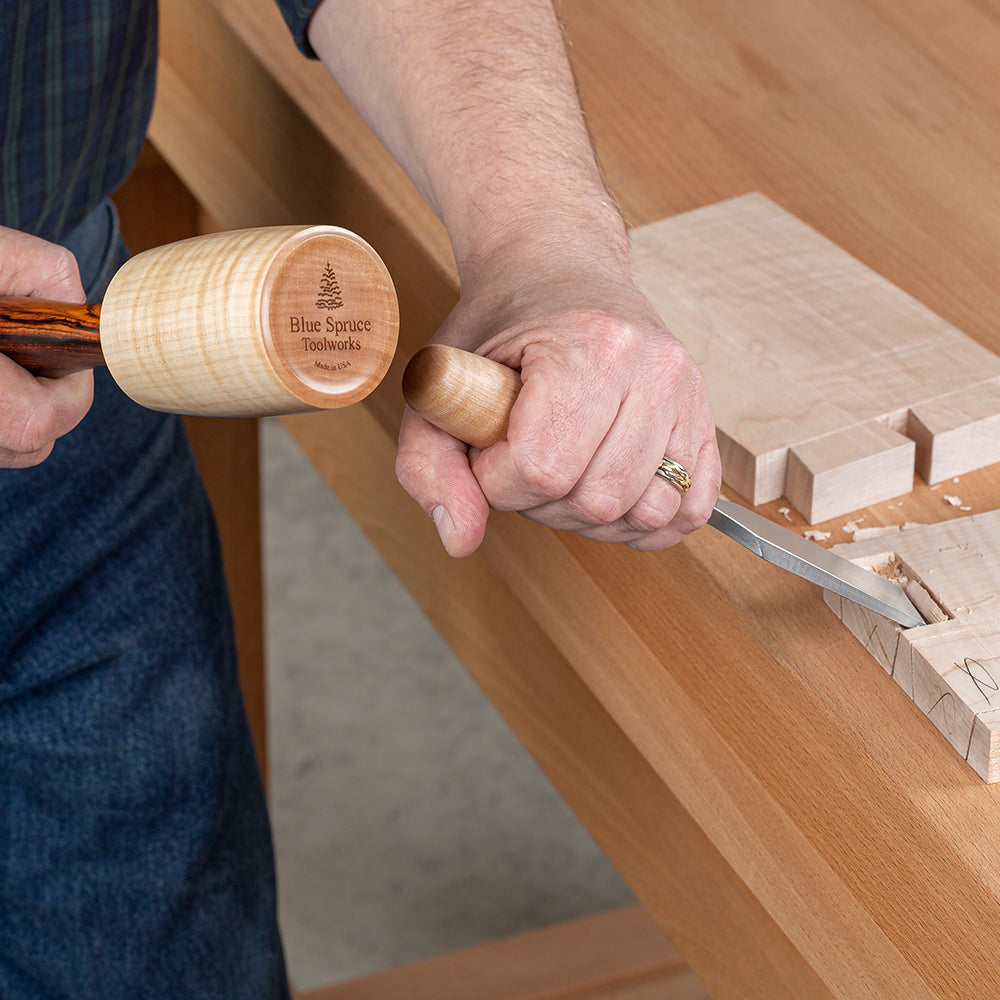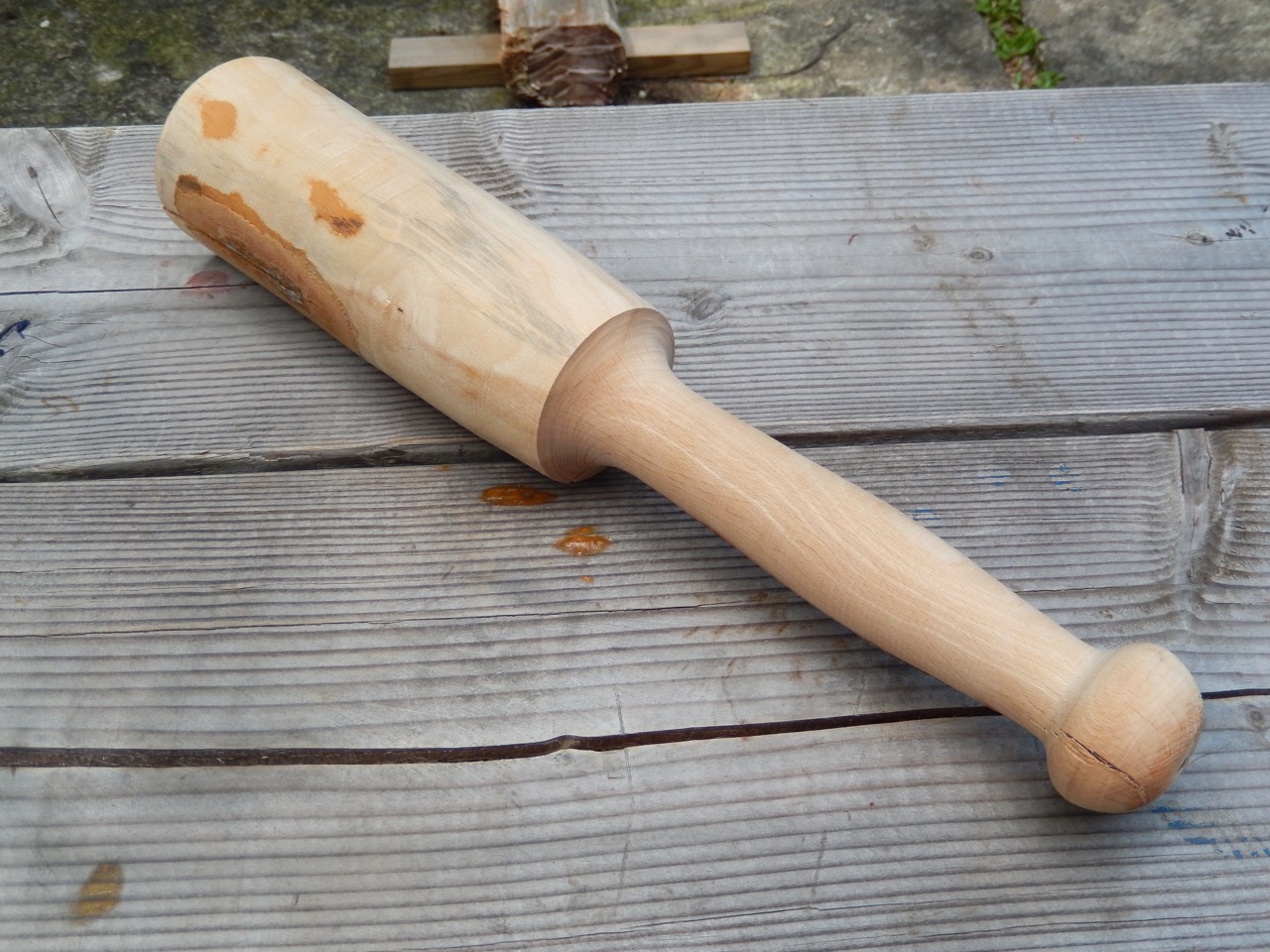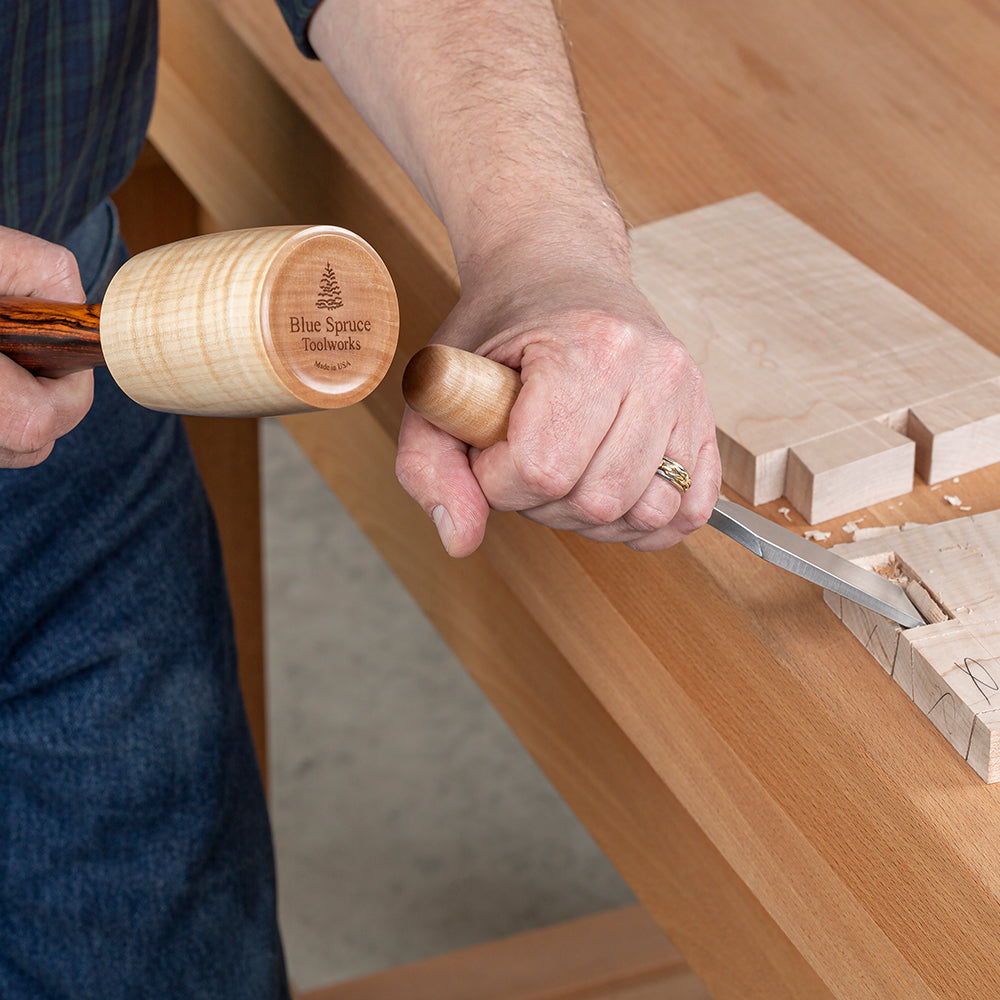If you’ve ever watched a woodworker in action, you may have noticed something interesting: they often use round mallets instead of regular hammers. So, why do woodworkers use round mallets? Well, let’s dive into the fascinating world of woodworking to find out!
Woodworkers use round mallets for a specific reason. These specialized tools are designed to provide controlled and precise blows to delicate wooden surfaces. Unlike regular hammers, round mallets distribute force evenly, reducing the risk of damaging the workpiece. Plus, their round shape prevents sharp edges from mar

Why Do Woodworkers Use Round Mallets?
Woodworkers have a wide range of tools at their disposal, each serving a specific purpose. One such tool that may often go unnoticed but plays a crucial role is the round mallet. This article aims to explore the reasons why woodworkers choose to use round mallets in their craft. From their ergonomic design to their versatility, we will delve into the benefits that these seemingly simple tools bring to the table.
The Ergonomics of Round Mallets
Woodworking is a labor-intensive craft that requires the use of various tools that can be taxing on the body. One of the reasons why woodworkers prefer round mallets is their ergonomic design. The round shape allows for a comfortable grip and prevents strain on the hands and wrists. The weight distribution and balance of a round mallet also contribute to reducing fatigue during extended use. This ergonomic advantage makes round mallets a popular choice among both beginner and experienced woodworkers.
Another aspect of the ergonomics of round mallets is their ability to provide precise control. The round shape allows woodworkers to accurately strike their chisel or other tools at specific angles, achieving the desired result with minimal effort. The rounded head of the mallet also provides a larger striking surface area, increasing the accuracy and reducing the risk of damaging the wood or the tool being used. This level of control and precision is essential in achieving clean and professional-looking woodworking results.
Furthermore, the round shape of the mallet prevents the chance of marring the wood. This is especially crucial when working with delicate or highly finished surfaces. The rounded edges of the mallet distribute the force evenly, avoiding any sharp edges that could damage the woodworking project. Woodworkers appreciate this feature as it allows them to work confidently, even on intricate designs or fragile materials.
Versatility of Round Mallets
One of the reasons why woodworkers gravitate toward round mallets is their versatility. Round mallets can be used for a wide range of woodworking tasks, making them a valuable addition to any woodworker’s toolbox. Whether it’s chiseling, carving, or assembling joints, a round mallet can help achieve precise and controlled strikes.
The versatility of round mallets lies in their ability to adapt to different woodworking techniques. Their rounded heads allow for both delicate taps and more forceful strikes, depending on the required task. This versatility makes round mallets suitable for various woodworking projects, from intricate detail work to heavy-duty applications.
Additionally, round mallets can be easily customized to suit individual preferences. The handle length and material can be tailored to the woodworker’s comfort and specific needs. Some woodworkers prefer shorter handles for increased control, while others opt for longer handles for improved leverage. The ability to customize the tool to fit personal preferences further enhances its versatility and usability.
Benefits of Using Round Mallets
Using round mallets in woodworking offers several benefits that contribute to the overall quality of the finished product. One of the significant advantages is the reduced risk of damaging tools. The round shape of the mallet’s head distributes force evenly, minimizing the chance of any one area bearing the brunt of the impact. This prevents damage to both the mallet and the tool being struck, ensuring they remain in optimal condition for prolonged use.
Another benefit of using round mallets is their ability to transfer force efficiently. The solid construction and rounded shape allow woodworkers to strike with greater force, resulting in cleaner and more precise cuts. This is particularly beneficial when working with harder woods or when removing larger amounts of material. The efficient transfer of force eliminates the need for excessive strain or repetitive strikes, improving overall efficiency and reducing the risk of errors.
Furthermore, using round mallets promotes better alignment and stability. The construction of the mallet ensures that the force is transmitted in a direct and controlled manner, reducing the chances of the tool slipping or bouncing off the surface of the wood. This stability allows woodworkers to work with increased accuracy and confidence, resulting in more refined and polished woodworking projects.
In conclusion, the use of round mallets in woodworking provides significant advantages in terms of ergonomics, versatility, and overall quality of work. These often-overlooked tools offer an ergonomic design that reduces strain and fatigue on the hands and wrists. The precise control, versatility, and ease of customization make them a preferred choice for woodworkers of all levels. By using round mallets, woodworkers can enhance their craft, achieve cleaner cuts, and enjoy a more efficient and rewarding woodworking experience.
Key Takeaways: Why Do Woodworkers Use Round Mallets?
- Round mallets are preferred by woodworkers because they distribute force evenly.
- They provide better control and accuracy compared to square or rectangular mallets.
- The round shape helps to prevent damage to delicate wood surfaces.
- Woodworkers can achieve a better balance and grip with round mallets.
- Round mallets reduce the risk of creating dents or visible marks on the wood.
Frequently Asked Questions
Woodworkers often use round mallets for a variety of reasons. These specialized tools are designed to provide specific benefits and enhance their woodworking projects. Here are some common questions about why woodworkers opt for round mallets:
1. How do round mallets differ from other mallets?
Round mallets, as the name suggests, have a circular head, which sets them apart from other mallets that may have a square or rectangular head. This shape allows woodworkers to apply force more evenly and accurately, reducing the risk of damaging their wood pieces. The rounded shape also prevents the mallet from getting stuck in mortises or other crevices, making it easier to maneuver during their woodworking tasks.
Furthermore, the design of round mallets often features a longer handle compared to other mallets. This additional length provides woodworkers with a greater swinging arc, allowing for increased control and power when striking chisels or driving wooden joinery together.
2. What advantages do round mallets offer over hammers?
While hammers are commonly used in various aspects of woodworking, round mallets offer several advantages. First, the round shape of the mallet’s head minimizes the risk of denting or damaging delicate wooden surfaces. This makes them particularly suitable for work that requires precision and finesse, such as carving or shaping intricate details.
Additionally, round mallets are specifically designed for woodworking applications, and their weight and balance are crafted to optimize the force applied. This makes them more efficient for tasks like driving chisels, mortising, or assembling joinery. The controlled striking momentum provided by round mallets helps woodworkers maintain better control over their cuts, resulting in cleaner and more accurate woodworking projects.
3. Can round mallets be used for all types of woodworking tasks?
Round mallets are versatile tools that can be used for a wide range of woodworking tasks. Whether it’s chiseling, carving, shaping, or assembling joinery, round mallets are suitable for many applications. However, it’s important to consider the size and weight of the mallet. Larger, heavier mallets are more suitable for heavy-duty tasks that require significant force, while smaller mallets are better suited for delicate applications.
Woodworkers often have a collection of varying sizes of round mallets to cater to different woodworking needs. By having a range of mallets, they can select the appropriate one based on the task at hand, ensuring optimal results and minimizing the chances of damage to their workpieces.
4. Are round mallets exclusive to traditional woodworking techniques?
No, round mallets are not exclusive to traditional woodworking techniques. They are still widely used in modern woodworking practices. While power tools have become more prevalent, many woodworkers still value the precision and control that round mallets offer. The tactile feedback and the ability to fine-tune their striking force make round mallets a valuable tool in both traditional and modern woodworking settings.
Furthermore, round mallets can be used in combination with power tools, such as when driving chisels with a mallet while using a drill press or a power mortiser. The versatility and compatibility of round mallets make them a valuable addition to any woodworker’s toolkit, regardless of the woodworking techniques employed.
5. Can beginners benefit from using round mallets?
Absolutely! Round mallets are suitable for woodworkers of all skill levels, including beginners. In fact, beginners can greatly benefit from using round mallets as they allow for greater control, making it easier to master woodworking techniques. The rounded shape and longer handles of round mallets provide a larger sweet spot for striking, reducing the chances of unintended slips or misfires.
Additionally, round mallets help beginners develop proper striking techniques by promoting accuracy and precision. As beginners practice their woodworking skills and gain experience, they can gradually fine-tune their striking force and improve their control. Using round mallets from the start sets a solid foundation for their woodworking journey, ensuring they develop good habits and achieve better results in their projects.
By using round mallets, woodworkers can enhance their woodworking experience by achieving better precision, control, and accuracy in their projects. Whether they are beginners or seasoned craftsmen, round mallets offer distinct advantages that contribute to the successful completion of their woodworking endeavors.

Why use a round mallet for wood carving
Summary
Woodworkers use round mallets because they are efficient and safe tools for their craft. Round mallets provide better control and precision when striking chisels and other woodworking tools. Their rounded shape distributes the force evenly, reducing the risk of accidentally damaging the workpiece. Additionally, round mallets are less likely to leave marks or dents on the wood compared to square or rectangular mallets. This makes them ideal for delicate woodworking projects that require finesse and attention to detail. Overall, using round mallets enhances the woodworking experience and helps woodworkers achieve better results.
In conclusion, round mallets are popular among woodworkers due to their effectiveness and user-friendly design. They offer improved control, precision, and reduced risk of damage to the workpiece. Whether you are a novice or experienced woodworker, using a round mallet can greatly enhance your woodworking projects and ensure a smooth, successful outcome. So next time you pick up your woodworking tools, consider using a round mallet and experience the difference it can make in your craft.
